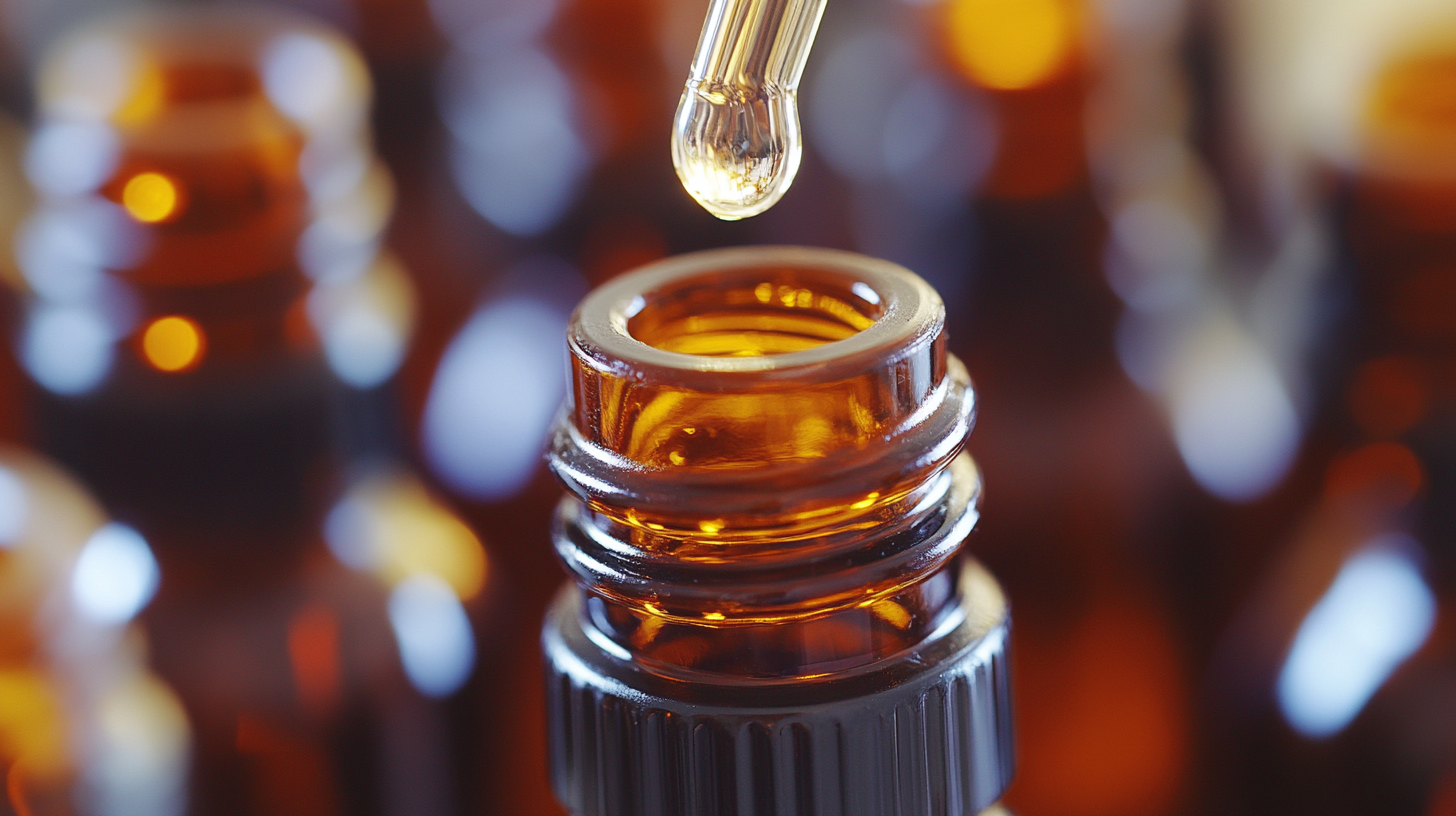The Ultimate Guide to Choosing the Best Dropper Bottles for Your Business
In today's competitive market, selecting the right dropper bottles for your business can significantly impact product quality and customer satisfaction. According to a recent report by MarketsandMarkets, the global demand for dropper bottles is projected to grow at a CAGR of 5.4% from 2021 to 2026, driven by the increasing popularity of liquid supplements and essential oils. As more entrepreneurs venture into sectors such as cosmetics, herbal remedies, and e-liquids, the necessity for high-quality, reliable packaging solutions becomes paramount. This ultimate guide aims to equip you with the essential criteria for choosing the best dropper bottles while highlighting key supplier characteristics. By understanding market trends and consumer preferences, businesses can make informed decisions that ultimately enhance their brand reputation and drive sales.

Understanding the Different Types of Dropper Bottles for Your Business Needs
When selecting dropper bottles for your business, it's essential to understand the various types available and how they align with your specific needs. Generally, dropper bottles can be categorized based on the materials they are made from, such as glass or plastic, and their closure types, including pipette, screw cap, or dropper tip. Glass bottles are often favored for their premium appearance and durability, making them ideal for high-end products like essential oils and tinctures. In contrast, plastic bottles, typically lighter and less fragile, can be a cost-effective solution for industries requiring larger quantities, such as the food and supplement sectors.
Additionally, the size of the dropper bottle plays a crucial role in functionality and customer satisfaction. Common sizes range from 15ml to 120ml, each serving different purposes. Smaller bottles are perfect for concentrated formulations, while larger options can cater to customers seeking bulk supplies. It's also important to consider the dropper design itself, as some droppers allow for more precise dispensing, which can enhance the customer experience and improve product usage. Choosing the right combination of material, size, and design will ensure that your dropper bottles not only meet your business needs but also deliver a positive user experience.
The Different Types of Dropper Bottles and Their Applications
Key Features to Consider When Selecting Dropper Bottles
When selecting dropper bottles for your business, several key features should be taken into account to ensure you choose the right product. First and foremost, material compatibility is critical. Studies suggest that both glass and certain types of plastics provide good barrier properties, which are essential for preserving the integrity of the contents. For example, glass offers excellent protection against oxygen and UV light, making it ideal for sensitive formulations, particularly in the skincare sector where ingredients can degrade over time.
Another vital consideration is the dropper design itself. Precision is paramount; an effective dropper should deliver a consistent volume with every use. Industry reports indicate that consumers favor dropper systems that allow for controlled dispensing, enhancing usability and reducing waste. Moreover, the ease of integration with child-resistant caps is increasingly important due to regulatory requirements, reflecting a wider trend in packaging safety. Choosing a dropper bottle that balances functionality with aesthetic appeal can significantly impact consumer perception and overall product success.
The Importance of Material and Design in Dropper Bottle Selection
When selecting dropper bottles for your business, the significance of material and design cannot be overstated. According to a report by Grand View Research, the global essential oils market, where dropper bottles are predominantly used, is expected to reach USD 13.94 billion by 2028, growing at a CAGR of 8.6%. This surge emphasizes the importance of choosing the right material for your bottles. For instance, glass bottles are favored for their inert nature and ability to preserve the integrity of sensitive liquids, while plastic options offer lightweight advantages and cost-effectiveness. Each material presents its own set of benefits, impacting not just functionality but also consumer perception.

Moreover, the design of dropper bottles plays a critical role in user experience and product efficacy. A study by Smithers Pira highlights that consumer preferences lean towards bottles that offer precision in dispensing and durability in design. Features such as a graduated dropper or an opaque body can enhance usability while protecting the contents from light degradation. The aesthetic appeal of the design can significantly affect brand identity and ultimately drive sales, as a well-designed bottle is likely to attract consumers' attention on crowded shelves. Understanding the interplay between material and design is essential in maximizing both product performance and brand appeal in a competitive market.
How Dropper Bottle Size and Capacity Impact Your Product Usability
When selecting dropper bottles for your product, size and capacity play a crucial role in usability. The right size impacts how easy it is for your customers to handle, dispense, and store your liquid products. For instance, smaller bottles are often more user-friendly for precision tasks, such as administering medicine or applying essential oils. They allow for greater control over the amount dispensed, thus reducing waste and ensuring that customers can meet their specific needs without over-pouring.
Additionally, the capacity of the dropper bottle should align with your product's intended use. If your offering is meant for everyday applications, a larger capacity may be beneficial, as it reduces the frequency of refills and provides convenience for customers. Conversely, if your product is a specialty item used infrequently, a smaller capacity might be ideal, as it encourages trial without overwhelming the customer. By carefully considering both the size and capacity of your dropper bottles, you can enhance the overall customer experience and better meet the demands of your target market.
The Ultimate Guide to Choosing the Best Dropper Bottles for Your Business - How Dropper Bottle Size and Capacity Impact Your Product Usability
| Bottle Size (ml) | Capacity (ml) | Usage Type | Material | Recommended Usage |
|---|---|---|---|---|
| 10 | 10 | Essential Oils | Glass | Personal Use |
| 30 | 30 | Cosmetics | Plastic | Commercial |
| 50 | 50 | Pharmaceuticals | Glass | Dropper Dispensers |
| 100 | 100 | Vitamins and Supplements | Plastic | Retail Sale |
| 150 | 150 | Food Flavorings | Glass | Bulk Supply |
Regulatory Compliance for Dropper Bottles in Various Industries
When selecting dropper bottles for your business, understanding regulatory compliance is essential, especially in industries like nutraceuticals and pharmaceuticals. Each industry has specific guidelines that govern the materials used, child safety features, and labeling requirements.
For instance, in the nutraceutical packaging market, which is projected to reach USD 4.2 billion by 2028, businesses must ensure their products meet stringent health regulations to avoid penalties and maintain market credibility.
Moreover, the laws surrounding CBD oil in various regions, including Puerto Rico, highlight the importance of compliance. Understanding local regulations can significantly influence your packaging choices and marketing strategies. As the pharmaceutical plastic bottles market continues to evolve, integrating smart packaging technologies not only enhances product safety but also ensures adherence to regulatory standards.
Companies should prioritize these aspects in their packaging design to foster growth and secure competitive advantages in their respective sectors.

